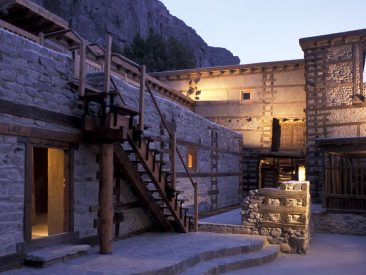Shigar Valley
Shigar District
A political sub-division of Gilgit-Baltistan and it is part of Baltistan and currently constitutes one of the ten districts of the Gilgit–Baltistan territory of Pakistan. It is bounded on the south and southwest by Skardu district on the east by Ghanche District, on the north by Xinjiang (China), on the northwest by and Gilgit and Nagar Districts
Shigar town is the capital of Shigar District. Shigar town is 30 away from Skardu city. Shigar is the home of world’s second highest peak K-2
Shigar Town
The town of Shigar is located in one of the most remote and dramatic parts of North Eastern Pakistan. It is situated on the banks of the Indus River in the 170km long Shigar Valley at a height of 2,291m (7,516 ft), just 32km north east from the district headquarters of Skardu, in the province of Gilgit-Baltistan. Shigar is the largest and most significant settlement in the Shigar Valley which is famous for its trekking and mountaineering routes into the high Karakoram ranges and is home to the world’s second highest peak K2 and nine of the world’s highest mountains.
In addition to its dramatic natural beauty, Shigar has a rich and diverse cultural tapestry with its cultural heritage dating back to 5th century Buddhism and the ancient Hunza dynasty of the 11th century when Shigar and the surrounding valley were a separate Kingdom and home to generations of the Amacha Royal Family.
The population of Shigar is approximately 62,707 (1242 households, 20 villages) in an area of 16km2. The people of Shigar are peaceful, hospitable, friendly with the majority being ‘Balties’ speaking the Balti language, an archaic form of the Tibetan language. There are small concentrations of Yashkun, Shins, Kashmiris and Pathans. Religiously most belong to the Shia sect of Islam.
Poverty is prevalent in Shigar with the community facing many environmental, health and education problems due to lack of resources and inadequate institutional capacity.
Unlike other towns in the Shigar Valley which rely on valuable trekking dollars Shigar has an agro based economy with over 96% of households earn a living solely from farming (wheat, barley, fodder crops and apricots). Only 4% of the community is engaged in other forms of employment. Currently government office jobs provide the second major form of employment, followed by commercial activity, trading, crafts and tourism.
Tourist attraction places in Shigar valley
The Shigar View Point.
The journey towards the beautiful valley of Shigar starts with a beautiful bridge called the Shigar Bridge on a twenty minutes’ drive from Skardu city. Just after crossing the bridge you have a magnificent view of a desert known as the Cold Desert Shigar. The road on the cold desert Shigar is long and smooth and is so charming that one wish it continue all the day as it is. After 15 minutes’ drive through the curve adventurous road on mountains you first reach The Shigar View Point. This particular location is called viewpoint because almost a large area of Shigar Valley can be seen from here. Tourist can enjoy a bird’s eye view of Shigar Valley from this location.
The Blind Lake Shigar
The Blind Lake Shigar, locally known as Jarbazoo more accurately Jarbachzoo is a screen freshwater lake in Shigar Valley. The view of Blind Lake Shigar is magnificent and exotic. It is a favorite tourist destination and the best place for photography.
The crystal clear blue water of the lake and lush green surroundings make its view more charming. Tourist can enjoy swimming and boating here.
The lake is located at 25 minutes’ drive from Shigar Viewpoint down at the bank of the river.
The River of Shigar
The turquoise-blue stream wound its merry way through the mountains and landscapes. Babbling and burbling, it sprung over the rocks in its way. Pebbles whisked about in the under wash like pieces of glitter. Streams are the liquid soul of the mountains of Shigar Valley. It is wonderful and awesome to experience a beautiful sunset at the bank of Shigar valley. The splashing sounds of water, the melodies of birds elevated by the relaxing sounds of nature is just amazing. Never miss this moment if you ever visit Shigar Valley.
The Shigar Fort, the Place on Rocks.
Shigar Fort locally known as Fong Khar, which is local Balti language means the place on rocks. It was built by Hassan Khan, the 20th ruler of the Amacha Dynasty, in the early 17th century.
Shigar Fort is Located on the legendary route to the world’s second highest mountain K-2. It is located in oasis-like surroundings, irrigated by the waters from the glaciers of Baltistan – one of the most impressive regions in the high Karakoram ranges and unsurpassed in natural beauty and cultural richness.
The Ambrique Mosque Shigar.
The Ambrique mosque in Shigar Valley is known as Khilangrong. The mosque in heart of Shigar Valley is believed to have sustained the rough times and weathers for more than four centuries, as it was built in the 18th century. This mosque looks a dusty, wooden, two-floor architecture. Like most of the housing architectures in the region, the mosque has a wooden structure with beautiful woodwork on it.
It is the best place to visit in Shigar Valley if take interest in antique and historical things.
Root to Ambrique Mosque Shigar.
Drive to Shigar Valley PSO Petrol Pump, there you will find a link road with a sign board telling the direction to the mosque.
Hashupi Bagh Shigar, the Apple Garden.
Hashupi Bagh in Shigar Valley is a garden different fruits dominantly a large variety of apples in it. Cheery is also found here. This garden is a tourist spot and rest area. The garden is beautifully maintained with colorful flowers and lush green landscapes.
Hashupi bagh is on a drive of 80 minutes from Skardu city. Tourist usually goes there to buy fresh fruits and have some rest while tour and sightseeing of other areas of Shigar Valley.
Baltoro Glaciers.
Want to see one of the longest glaciers located in the Karakoram and Himalayan ranges. Here in Shigar Valley where you go. This Place is not for normal tourists visiting Shigar Valley because it is the very hard tour, but if you love trekking and take risks in life with adventure the next three places is for you.
You have to travel to Askole Valley Shigar from Skardu, a one day travel time. From Askoli you have to walk for five days to reach Baltoro Glaciers and so on.
K2 Base Camp.
This is one of the greatest treks in the world, unbeatable in terms of close-up mountain views and proximity to many of the world’s highest peaks. After an almost trekking of seven days we could reach at the famous Concordia which is the junction between Baltoro and Godwin Austin a place which serves at the base for four major mountain Gasherbrum II ( 8035m ), Broad Peak ( 8047m ) and Hidden Peak or Gasherbrum I ( 8068m ) dominated by the king of the mountains, K-2 ( 8611m ). This place is far most one of the beautiful places of the world and the view of K2 on a clear day can be severely mesmerizing.
The K2 Mountain.
The K2 is the world’s second highest peak with an elevation of 8611 meters. Locally in Balti language, K2 is known as “Chogori” which means the king of mountains. The k2 is located in the Karakoram mountains and on the border of Pak-China. K2 is rocky mountain uphill 6000m but the track transforms into a mountain of snow as you progress. In 1887 first time the k2 and various glaciers were discovered by a British surveyor Goodwin Austin. K2 gained international attention when a number of expeditions were failed because of the harsh weather conditions and strenuous track. Finally, the Lino Lacedelli and Achilles Compagni climbed K2 and laid the foundation for others to follow.
Hisper, Snow Lake, Hoo Valley.
Snow Lake, or Lukpe Lawo, is a high-altitude glacial basin in the Karakoram mountain range in Gilgit-Baltistan. Snow Lake is located 16,000 feet (4,877 m) above sea level and is approximately 10 miles (16 km) wide. The basin lies at the head of the Biafo and Hispar glaciers, which spread down from the Hispar Pass in opposite directions, forming a 61 mile (100 km) river of ice that is among the world’s longest continuous glacier systems outside of the Polar Regions. Martin Conway, the first foreign visitor, gave Snow Lake the name in 1892. Conway described Snow Lake as “beyond all comparison the finest view of mountains it has ever been my lot to behold, nor do I believe the world can hold a finer. Snow Lake is very difficult to reach, however, and only about 200 people manage to reach it per year.
The Jamal Pass trek begins in the green and beautiful Hoh valley and crosses the 5300 meters high Jamal Pass down to the massive Biafo glacier. From Biafo glacier it is possible to continue on the Biafo-Hispar Snow Lake Trek to Hunza. This new route directly connects Hunza to Shigar Valley.

